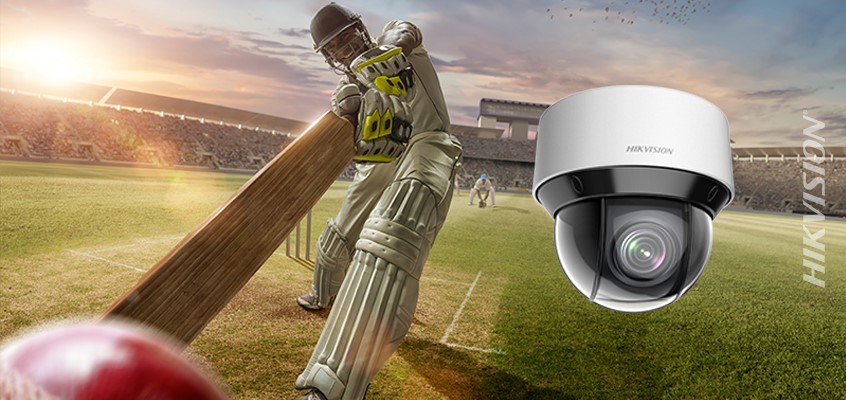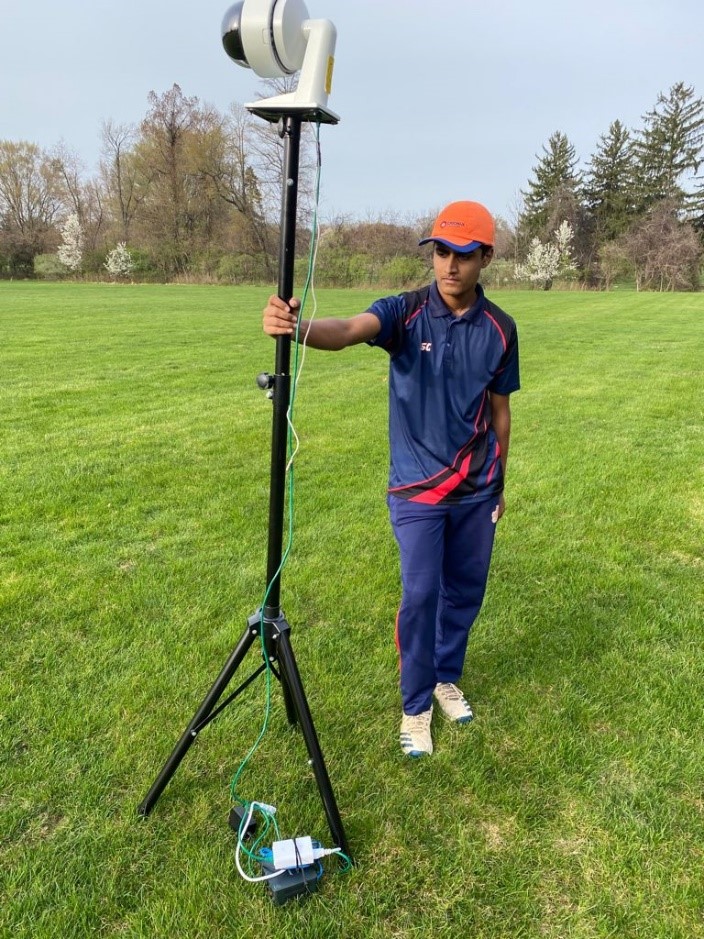Hikvision IP Cameras Facilitate Simpler Cloud Based Streaming of US Cricket Games for Streaming Provider Cricademy

Cricademy’s mission is to provide high quality live streaming video to cricket leagues and cricket clubs all around the country in an affordable and portable manner. To achieve this, Cricademy required IP cameras for live streaming, without additional items such as encoders and external PCs.
“I played cricket since I was eight years old and now I’m part of the USA U-19 Mid-Atlantic Zone squad. Typically cricket teams and clubs used to livestream games using a camcorder, a video encoder, and a laptop with Open Broadcaster Software (OBS). I wanted to simplify the setup by creating a cloud based streaming product with the help of Hikvision IP cameras,” said Vishrut Kannan, Founder of Cricademy. Kannan added that since cricket games are played outdoors, he was seeking a camera that performed well in higher temperatures.
Hikvision IP cameras provided a versatile solution with high performance recording in all types of weather. Keep reading to learn more about how this fascinating solution came together.
The First Ever IP Camera Streaming Solution
Cricademy is the first cricket streaming platform to utilize an IP camera to enhance live streaming quality. Using an IP camera has various benefits, such as a built-in encoder and the unique ability to control the camera remotely using an app to change the position of the camera. In addition, Hikvision’s DS-2DE4A425IW-DE Value Series 4 MP PTZ Camera features 25x optical zoom, enabling Cricademy to easily focus from one end of the field to the other with ease. This allows the film crew to carry around less equipment when traveling to different grounds.
Designed to Perform in Hot Weather
Hikvision’s outdoor cameras are designed to withstand intense weather while maintaining high quality recording. The selected Hikvision DS-2DE4A425IW-DE Value Series 4 MP PTZ Camera can operate in temperatures from -22 degrees to 149 degrees Fahrenheit, making these an effective camera choice for Cricademy’s livestream operations.
Standard camcorders and analog cameras are unable to perform in challenging weather as these types of equipment are somewhat fragile.
Powerful Optical Zoom

Image: Vishrut Kannan, Founder of Cricademy, standing next to the pole mounted Hikvision PTZ Camera.
A typical cricket ground has a diameter of about 600 feet (approx. 180 meters). The Hikvision PTZ Cameras can easily focus on any part of the grounds with its powerful 25x optical zoom technology.
Watch a video of Cricademy Live at the Millennium Cricket League Division B in New Jersey to see the Hikvision camera in action.
Simplified Customization
Hikvision offers APIs for programmers, and Cricademy used this functionality to develop their own iOS app to control the cameras and watch the live video feed. Camcorder-based solutions do not provide preset functionality and cameras must be moved manually across the field. Hikvision IP cameras worked well with the Cricademy app to improve access to viewing that captures the full experience.
Innovation Delivers Results
Hikvision IP cameras come equipped with numerous innovative features, deep learning algorithms, and advanced analytics modules. These cameras can perform a multitude of advanced functions, such as motion detection, object tracking and more. This innovation offers a wide range of options that enable Cricademy to expand upon their cricket game livestreams.
